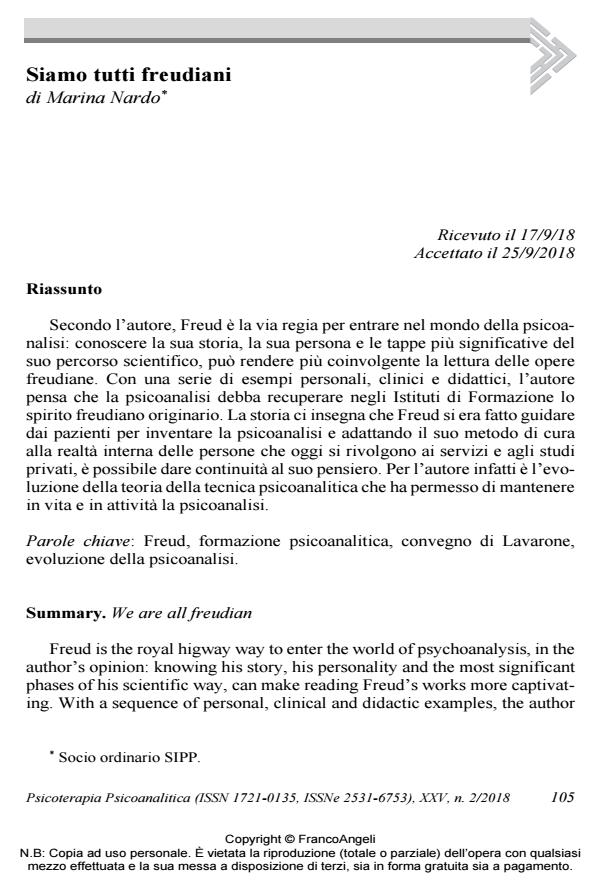We are all freudian
Journal title PSICOTERAPIA PSICOANALITICA
Author/s Marina Nardo
Publishing Year 2018 Issue 2018/2
Language Italian Pages 13 P. 105-117 File size 175 KB
DOI 10.3280/PSP2018-002008
DOI is like a bar code for intellectual property: to have more infomation
click here
Below, you can see the article first page
If you want to buy this article in PDF format, you can do it, following the instructions to buy download credits

FrancoAngeli is member of Publishers International Linking Association, Inc (PILA), a not-for-profit association which run the CrossRef service enabling links to and from online scholarly content.
Freud is the royal higway way to enter the world of psychoanalysis, in the author’s opinion: knowing his story, his personality and the most significant phases of his scientific way, can make reading Freud’s works more captivating. With a sequence of personal, clinical and didactic examples, the author claims that the psychoanalysis ought to recover its original Freudian spirit in the Training Institutes. History teaches us that Freud has been led by his patients to invent psychoanalysis. Adapting his therapy method to the inner reality of the people who turn to facilities and private practitioners today, it is possible to give continuity to his way of thinking. Indeed, according to the author, the development of the theory of psychoanalytical technique has made it possible for psychoanlysis to be kept alive and active.
Keywords: Freud, psychoanalytical development, convention of Lavarone, evolution of psychoanalysis.
Marina Nardo, Siamo tutti freudiani in "PSICOTERAPIA PSICOANALITICA" 2/2018, pp 105-117, DOI: 10.3280/PSP2018-002008